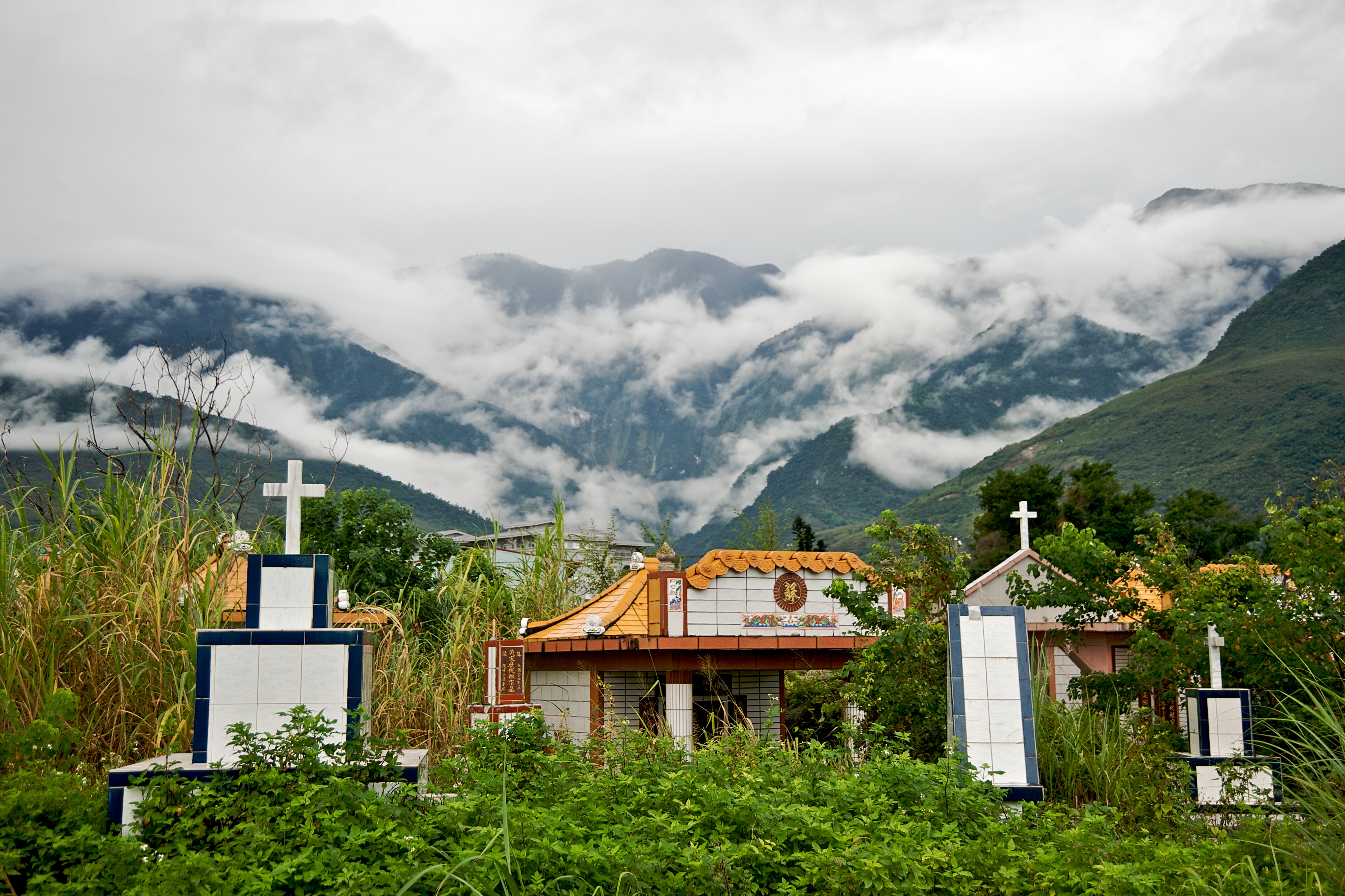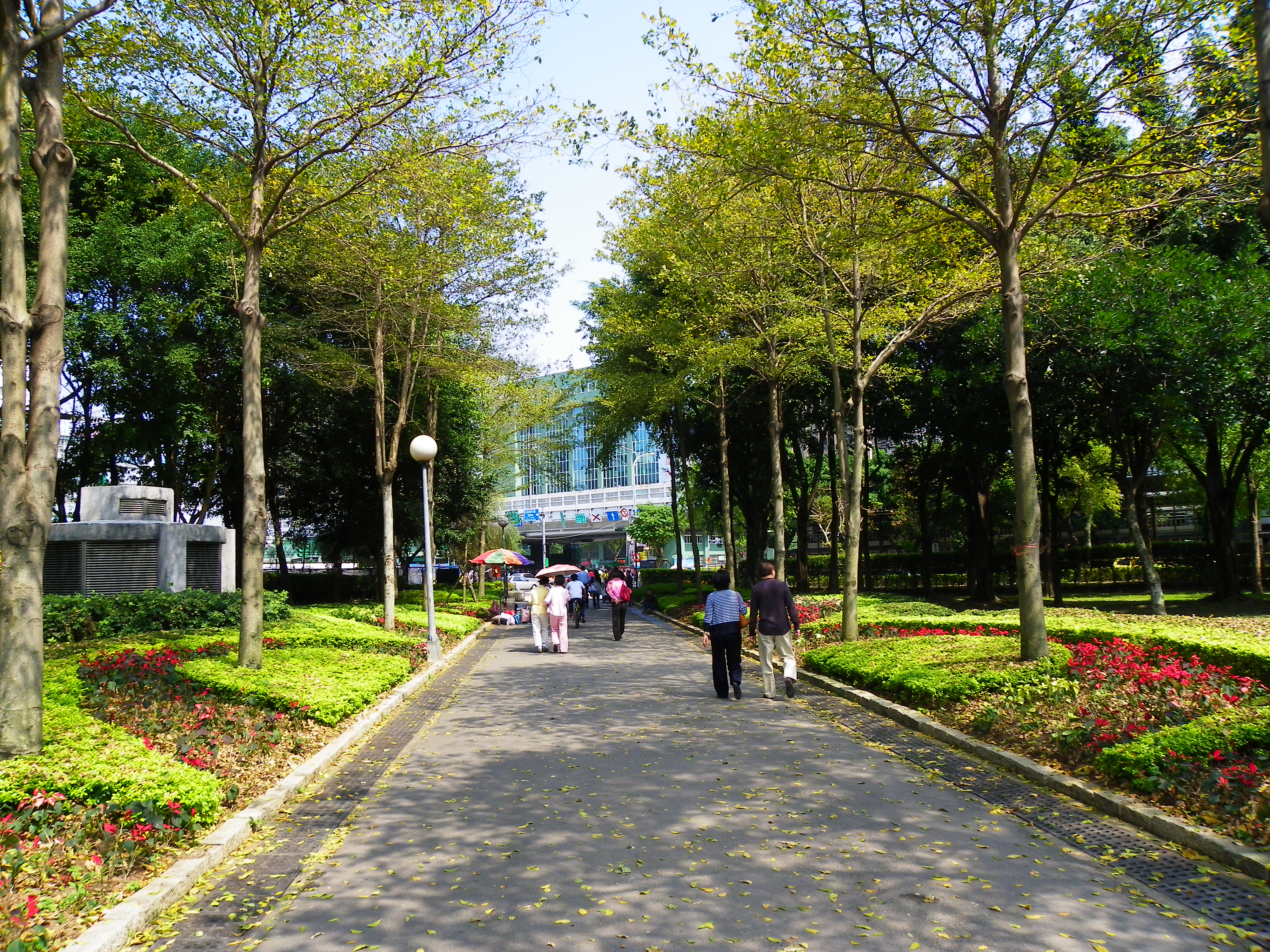|
Saoba Stone Pillars
Saoba Stone Pillars (), as known as Wuhe Stone Pillars (), is an archaeological site at Wuhe Village, Ruisui Township, Hualien County, Taiwan. History The stone pillar are artifacts from Beinan culture since Stone Age era around 2,000-3,000 years ago. The site was then classified as 3rd grade national historic monument by the Ministry of the Interior. Geology The stones stand along the Wuhe Terrace. The site consists of two adjacent stone pillars standing with 5.75 meters and 3.99 meters of height. It is located in an oval area with 600 meters in length and 400 meters in width. Transportation The site is accessible south of Ruisui Station of Taiwan Railways. See also * List of parks in Taiwan * Prehistory of Taiwan Most information about Taiwan before the arrival of the Dutch East India Company in 1624 comes from archaeological finds throughout the island. The earliest evidence of human habitation dates back 20,000 to 30,000 years, when lower sea levels expo ... Referenc ... [...More Info...] [...Related Items...] OR: [Wikipedia] [Google] [Baidu] |
Ruisui
Ruisui Township is a rural township located in southern Hualien County, Taiwan, and has a population of 12,107 inhabitants in 11 villages. The population is composed of Hoklo, Hakka, and Taiwanese aborigines, most of whom are Amis. Agriculture and tourism are major industries. History During Qing rule, the headquarters of Taitung Prefecture was located in modern-day Ruisui, known then as ''Tsui-be'', or ''Tsui-boe'' (). Those Chinese characters () were rendered ''Mizuo'' in Japanese during Japanese rule of Taiwan, but were later changed to , ''Mizuho'' in 1917. This written form was retained after the Kuomintang takeover of Taiwan in 1945; the characters are pronounced ''Sūi-sūi'' and ''Ruìsuì'' in Taiwanese and Mandarin Chinese, respectively. Geography The township lies in an alluvial plain which located midway up the Huadong Valley between the Central Mountain Range, Coastal Mountain Range and Wuhe Terrace. Rafting activity on the Xiuguluan River often starts ... [...More Info...] [...Related Items...] OR: [Wikipedia] [Google] [Baidu] |
Hualien County
Hualien County (Mandarin Wade–Giles: Hua¹-lien² Hsien⁴; Pīnyīn: ''Huālián Xiàn''; Hokkien POJ: ''Hoa-lian-koān'' or ''Hoa-liân-koān''; Hakka PFS: ''Fâ-lièn-yen''; Amis: ''Kalingko'') is a county on the east coast of Taiwan. It is the largest county by area, yet due to its mountainous terrain, has one of the lowest populations in the country. The county seat and largest city is Hualien City. Most of the population resides in the Huadong Valley, which runs north to south, sandwiched between the Central and Hai'an mountain ranges. Due to the rural nature of the county, Hualien attracts many visitors for its natural environment, which includes Taroko Gorge, Qingshui Cliff and Qixingtan Beach. History Early history Modern-day Hualien City was originally called ''Kilai'' (), after the Sakiraya Taiwanese aborigines and their settlement. Spanish settlers arrived in 1622 to pan for gold. Picking up the sounds of native words, these settlers called the area ''Turumoa ... [...More Info...] [...Related Items...] OR: [Wikipedia] [Google] [Baidu] |
Taiwan
Taiwan, officially the Republic of China (ROC), is a country in East Asia, at the junction of the East and South China Seas in the northwestern Pacific Ocean, with the People's Republic of China (PRC) to the northwest, Japan to the northeast, and the Philippines to the south. The territories controlled by the ROC consist of 168 islands, with a combined area of . The main island of Taiwan, also known as ''Formosa'', has an area of , with mountain ranges dominating the eastern two-thirds and plains in the western third, where its highly urbanised population is concentrated. The capital, Taipei, forms along with New Taipei City and Keelung the largest metropolitan area of Taiwan. Other major cities include Taoyuan, Taichung, Tainan, and Kaohsiung. With around 23.9 million inhabitants, Taiwan is among the most densely populated countries in the world. Taiwan has been settled for at least 25,000 years. Ancestors of Taiwanese indigenous peoples settled the isla ... [...More Info...] [...Related Items...] OR: [Wikipedia] [Google] [Baidu] |
Archaeological Site
An archaeological site is a place (or group of physical sites) in which evidence of past activity is preserved (either prehistoric or historic or contemporary), and which has been, or may be, investigated using the discipline of archaeology and represents a part of the archaeological record. Sites may range from those with few or no remains visible above ground, to buildings and other structures still in use. Beyond this, the definition and geographical extent of a "site" can vary widely, depending on the period studied and the theoretical approach of the archaeologist. Geographical extent It is almost invariably difficult to delimit a site. It is sometimes taken to indicate a settlement of some sort although the archaeologist must also define the limits of human activity around the settlement. Any episode of deposition such as a hoard or burial can form a site as well. Development-led archaeology undertaken as cultural resources management has the disadvantage (or the ben ... [...More Info...] [...Related Items...] OR: [Wikipedia] [Google] [Baidu] |
Stone Age
The Stone Age was a broad prehistoric period during which stone was widely used to make tools with an edge, a point, or a percussion surface. The period lasted for roughly 3.4 million years, and ended between 4,000 BC and 2,000 BC, with the advent of metalworking. Though some simple metalworking of malleable metals, particularly the use of gold and copper for purposes of ornamentation, was known in the Stone Age, it is the melting and smelting of copper that marks the end of the Stone Age. In Western Asia, this occurred by about 3,000 BC, when bronze became widespread. The term Bronze Age is used to describe the period that followed the Stone Age, as well as to describe cultures that had developed techniques and technologies for working copper alloys (bronze: originally copper and arsenic, later copper and tin) into tools, supplanting stone in many uses. Stone Age artifacts that have been discovered include tools used by modern humans, by their predecessor species in the ... [...More Info...] [...Related Items...] OR: [Wikipedia] [Google] [Baidu] |
Ministry Of The Interior (Taiwan)
The Ministry of the Interior (MOI; ) is a cabinet level policy-making body, governed under the Executive Yuan of the Republic of China (Taiwan). It is the fundamental executive yuan agency responsible for home affairs and security throughout Taiwan, including population, land, construction, military service administration, national emergency services, local administration systems, law enforcement and social welfare (prior to 23 July 2013). Core functions It closely monitors the rights of the residents and every aspect of national development to ensure steady progress of the nation, strengthen social peace and order, and upgrade the quality of citizens' lives. The Ministry strives to achieve the following: # Accomplish government reform to boost government vitality; # Care for the minorities; # Promote a fair military service system; # Implement pragmatic growth management to promote sustainable development; # Reinforce police administration reform; # Strengthen crisis managemen ... [...More Info...] [...Related Items...] OR: [Wikipedia] [Google] [Baidu] |
Ruisui Railway Station
Ruisui () is a railway station on the Taiwan Railways Administration Taitung line located in Ruisui Township, Hualien County, Taiwan. History The station was opened on 26 January 1915. Around the station * Rareseed Ranch * Ruisui Tropic of Cancer Marker * Saoba Stone Pillars See also * List of railway stations in Taiwan There are currently six operating railway systems in Taiwan: The two Inter-city rail systems, Taiwan Railways and Taiwan High Speed Rail, have several overlaps in station names. See below ''Taiwan High Speed Rail'' section for their relations in ... References 1915 establishments in Taiwan Railway stations in Hualien County Railway stations opened in 1915 Railway stations served by Taiwan Railways Administration {{Taiwan-railstation-stub ... [...More Info...] [...Related Items...] OR: [Wikipedia] [Google] [Baidu] |
Taiwan Railways Administration
Taiwan Railways Administration (TRA) is a railway operator in Taiwan. It is an agency of the Ministry of Transportation and Communications, responsible for managing, maintaining, and running conventional passenger and freight railway services on 1097 km of track in Taiwan. Since Taiwan is heavily urbanised with a high population density, railways have played an important part in domestic transportation since the late 19th century. Passenger traffic in 2018 was 231,267,955. The agency's headquarters are in Zhongzheng District, Taipei. Overview Railway services between Keelung and Hsinchu began in 1891 under China's Qing dynasty. Because the railway was completely rebuilt and substantially expanded under the operated by Formosa's Japanese colonial government (1895–1945), the network's Japanese influence and heritage persists. Similarities between the TRA and the Japan Railways (JR) companies can be noted in signal aspects, signage, track layout, fare controls, sta ... [...More Info...] [...Related Items...] OR: [Wikipedia] [Google] [Baidu] |
List Of Parks In Taiwan
This is a list of parks in Taiwan, Republic of China. Taipei * 228 Peace Memorial Park * Bailing Sport Park * Bangka Park * Beitou Park * Bihu Park * Chengmei Riverside Park * Daan Forest Park * Dahu Park * Dajia Riverside Park * Fudekeng Environmental Restoration Park * Guandu Nature Park * Guanshan Riverside Park * Jieshou Park * Meiti Riverside Park * Nangang Park * Nanxing Park * Rongxing Garden Park * Sanmin Park * Shanshuilu Eco Park * Shingyi Plaza * Shuangxi Park and Chinese Garden * Songshan Cultural and Creative Park * Taipei Botanical Garden * Taipei Water Park * Xinzhong Park * Yingfeng Riverside Park * Youth Park * Zhongshan Linear Park New Taipei * Erchong Lotus Park * Erchong Riverside Park * Kinchen Park * Stone Sculpture Park Taichung * Fengle Sculpture Park * Lüshun Park * Taichung Metropolitan Park * Taichung New Capital Ecological Park * Taichung Park Kaohsiung * Central Park * Dapingding Tropical Botanical Garden * Jhon ... [...More Info...] [...Related Items...] OR: [Wikipedia] [Google] [Baidu] |
Prehistory Of Taiwan
Most information about Taiwan before the arrival of the Dutch East India Company in 1624 comes from archaeological finds throughout the island. The earliest evidence of human habitation dates back 20,000 to 30,000 years, when lower sea levels exposed the Taiwan Strait as a land bridge. Around 5,000 years ago, farmers from the southeast Chinese coast settled on the island. These people are believed to have been speakers of Austronesian languages, which dispersed from Taiwan across the islands of the Pacific and Indian Oceans. The current Taiwanese aborigines are believed to be their descendants. Geographical context The island of Taiwan was formed approximately 4 to 5 million years ago on a complex convergent boundary between the continental Eurasian Plate and the oceanic Philippine Sea Plate. The boundary continues southwards in the Luzon Volcanic Arc, a chain of islands between Taiwan and the Philippine island of Luzon including Green Island and Orchid Island. From the ... [...More Info...] [...Related Items...] OR: [Wikipedia] [Google] [Baidu] |
Archaeological Sites In Taiwan
Archaeology or archeology is the scientific study of human activity through the recovery and analysis of material culture. The archaeological record consists of artifacts, architecture, biofacts or ecofacts, sites, and cultural landscapes. Archaeology can be considered both a social science and a branch of the humanities. It is usually considered an independent academic discipline, but may also be classified as part of anthropology (in North America – the four-field approach), history or geography. Archaeologists study human prehistory and history, from the development of the first stone tools at Lomekwi in East Africa 3.3 million years ago up until recent decades. Archaeology is distinct from palaeontology, which is the study of fossil remains. Archaeology is particularly important for learning about prehistoric societies, for which, by definition, there are no written records. Prehistory includes over 99% of the human past, from the Paleolithic until the advent of ... [...More Info...] [...Related Items...] OR: [Wikipedia] [Google] [Baidu] |








.jpg)